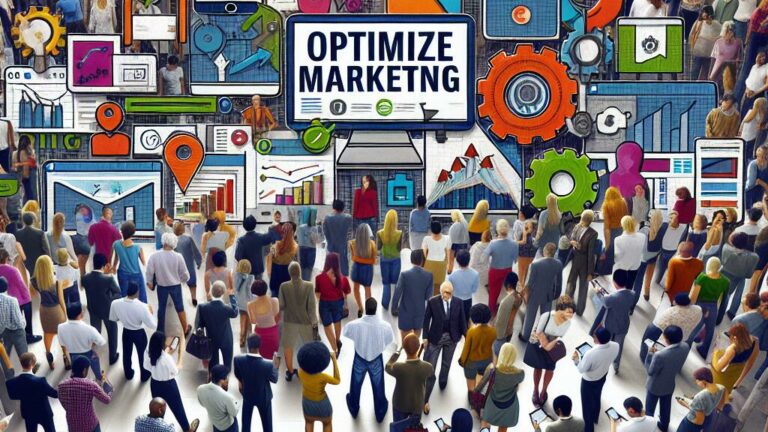Why Content Marketing is Essential for Business Growth
Content Marketing Strategies for Social Media Platforms
Content marketing on social media platforms has become an integral aspect of any successful marketing strategy. With the vast number of users on platforms like Facebook, Instagram, Twitter, and LinkedIn, businesses have a unique opportunity to connect with their target audience on a more personal level. One effective strategy is to tailor content to each platform’s specific audience demographics and preferences. For example, visual content tends to perform well on Instagram and Pinterest, while short and engaging posts are more suited for Twitter.
Another key strategy is to maintain consistency in posting content across different social media platforms. By creating a content calendar and scheduling posts in advance, businesses can ensure that they are regularly engaging with their audience. Additionally, engaging with followers through comments, messages, and interactive content like polls and quizzes can help foster a sense of community and loyalty among customers. The key is to create valuable and relevant content that resonates with the target audience and encourages them to interact and share with their network.
Leveraging Different Channels to Reach Diverse Audiences
To effectively reach diverse audiences, businesses must leverage a variety of channels in their content marketing strategies. Each channel offers a unique platform to engage with different segments of the target market. Social media platforms such as Facebook, Instagram, Twitter, and LinkedIn provide avenues to connect with audiences in a more interactive and personalized manner. By tailoring content according to the preferences and behaviors of users on each platform, businesses can create a more impactful and relatable message that resonates with diverse audience groups.
Moreover, incorporating email marketing, blogging, podcasts, and webinars into the content strategy can further enhance the reach and engagement levels across various audience segments. Email campaigns allow for direct communication with subscribers, while blogs enable businesses to share in-depth insights and valuable information with their audience. Podcasts and webinars provide an audiovisual medium to connect with audiences who prefer consuming content through auditory and visual means. By diversifying the channels through which content is disseminated, businesses can effectively target different demographics and interests within their audience base.
Measuring the Success of Content Marketing Campaigns
Measuring the success of content marketing campaigns is crucial for businesses to gauge the effectiveness of their strategies and make informed decisions moving forward. One key aspect of measuring success is analyzing various metrics that provide insights into the performance and return on investment (ROI) of the content being produced. By tracking metrics such as website traffic, engagement rates, conversion rates, and social media interactions, businesses can evaluate the impact of their content and adjust their approach accordingly.
Another important factor in measuring the success of content marketing campaigns is setting clear goals and key performance indicators (KPIs) at the outset. These goals should be specific, measurable, achievable, relevant, and time-bound (SMART), allowing businesses to track their progress and determine whether their efforts are aligning with their overall objectives. Regularly reviewing and analyzing these KPIs enables businesses to identify areas for improvement, capitalize on successful tactics, and optimize their content marketing strategies for greater impact and effectiveness.
Analyzing Key Metrics to Enhance Performance and ROI
Analyzing key metrics is crucial in the realm of content marketing to evaluate the effectiveness of campaigns and optimize performance. By closely monitoring metrics such as website traffic, conversion rates, and engagement levels, businesses can gain valuable insights into what resonates with their target audience and adjust their strategies accordingly. These metrics provide a quantitative basis for decision-making, allowing companies to allocate resources efficiently and maximize return on investment (ROI).
Furthermore, delving into metrics like bounce rates, time spent on site, and click-through rates unveils areas for improvement in content engagement and user experience. By identifying trends and patterns within these metrics, businesses can refine their content strategy to better cater to the preferences and behaviors of their audience. Through continuous analysis and adjustment based on key performance indicators, businesses can continuously enhance their content marketing efforts and achieve greater success in driving growth and profitability.
Incorporating Visual Content into Marketing Efforts
Visual content has become a crucial element in modern marketing strategies. Incorporating captivating images, videos, infographics, and other visual assets into your content can significantly enhance your brand’s online presence and engagement levels. Research indicates that visual content is processed faster by the human brain compared to text, making it a powerful tool to convey messages and evoke emotional responses from your target audience.
When incorporating visual content into your marketing efforts, it’s essential to maintain consistency with your brand’s identity and messaging. Visual elements should align with your brand colors, fonts, and overall style to create a cohesive and recognizable look across all platforms. Additionally, focusing on high-quality visuals that are relevant to your content can help you stand out in a crowded digital landscape and leave a lasting impression on your audience. By leveraging visual content effectively, businesses can drive better engagement, increase conversions, and ultimately boost their overall marketing performance.
Enhancing Engagement and User Experience with Multimedia
Incorporating multimedia elements into your content marketing efforts can significantly enhance audience engagement and improve the overall user experience. By including videos, images, infographics, and other visual content, you can make your message more compelling and captivating for your target audience. Visual content tends to be more shareable on social media platforms, potentially increasing the reach of your marketing campaigns.
Moreover, multimedia content has the power to convey complex information in a more digestible and memorable format. Through videos and interactive visuals, you can bring your brand story to life and create a deeper connection with your audience. This immersive experience can lead to higher levels of engagement and build a stronger bond between your brand and customers.
Content Personalization for Enhanced Customer Experience
Content personalization is a powerful strategy that businesses can utilize to enhance the customer experience. By tailoring content to meet individual needs and preferences, companies can build stronger relationships with their audience and foster loyalty. Personalized content resonates better with customers as it speaks directly to their interests, making them feel valued and understood by the brand.
One effective way to implement content personalization is by using customer data to segment your audience into different groups based on their demographics, behaviors, and preferences. By understanding the unique characteristics of each segment, businesses can create tailored content that addresses specific needs and interests. This targeted approach not only improves the effectiveness of marketing campaigns but also helps in building a more personalized and engaging experience for customers.
Tailoring Content to Meet Individual Needs and Preferences
Understanding the unique needs and preferences of individual consumers is crucial for effective content marketing. By tailoring content to resonate with specific audiences, businesses can enhance engagement and build stronger relationships with their customers. This targeted approach allows brands to deliver personalized experiences that cater to the diverse interests and preferences of their audience segments.
Personalization in content marketing involves creating tailored messaging, products, and services that address the individual needs of consumers. By leveraging data analytics and consumer insights, businesses can develop customized content that speaks directly to the desires and challenges of their target audience. This personalized approach not only increases the relevance of marketing efforts but also fosters a sense of connection and loyalty among consumers.
FAQS
What is content marketing and why is it essential for business growth?
Content marketing involves creating and distributing valuable, relevant content to attract and engage a target audience. It is essential for business growth as it helps build brand awareness, establish credibility, and drive customer loyalty.
How can businesses leverage different social media platforms for their content marketing strategies?
Businesses can leverage different social media platforms by tailoring their content to suit the platform’s audience preferences, engaging with followers through interactive posts, and utilizing analytics to measure the effectiveness of their efforts.
How can businesses measure the success of their content marketing campaigns?
Businesses can measure the success of their content marketing campaigns by tracking key metrics such as website traffic, engagement rates, conversion rates, and customer feedback. Analyzing these metrics can help businesses enhance their performance and ROI.
Why is incorporating visual content into marketing efforts important for business growth?
Incorporating visual content into marketing efforts is important for business growth as it helps enhance engagement, convey messages more effectively, and improve user experience. Visual content such as videos, infographics, and images can make a brand more memorable and shareable.
How can businesses personalize their content to enhance customer experience?
Businesses can personalize their content by segmenting their audience based on demographics, behavior, and preferences, tailoring content to meet individual needs, and using personalization tools and technologies. Personalizing content helps businesses create more relevant and engaging experiences for their customers.







